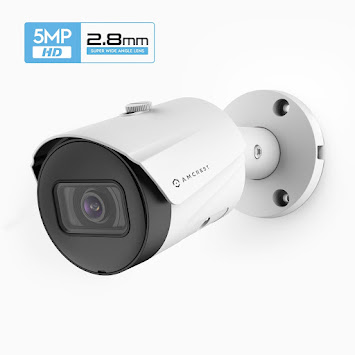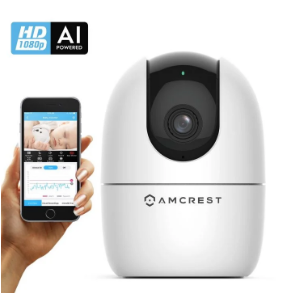What are the pros and cons of wired and wireless security cameras?
We'll help you understand the differences between wired and wireless CCTV systems so that you can choose which one suits you best.
A wireless camera can be powered with AC power. A standard household outlet, or batteries could power a wireless camera.
Below is a brief explanation of the terms.
Wired Connects via Cable to a power source or the internet
Wireless:connects by cable to Wi-Fi or to a power supply via a cable
Wireless cameras are wirelessly connected to the internet via WiFi and powered by batteries
What are Wireless Home Security Cameras?
An AC powered wireless home security camera can also be powered via Wi-Fi. This wireless camera transmits video via Wi-Fi. It is also called a Wiicam. To plug it in, you will need an adaptor. Wireless cameras can be wired but are not wire-free. Wireless cameras can be connected to a wireless battery-powered wireless cam.
Most wireless home security cameras store footage on a cloud server. Many cameras can store video on local media. Wireless cameras are easy to install and you can view your footage on a smartphone, tablet, or computer.
The wifi camera can record sounds and movements. Some cameras can connect to the power supply to enable continuous recording. High-resolution cameras can record at night if equipped with night vision. Two-way microphones can be used to communicate with the subject of the image. Machine learning allows models identify packages and people and notify you when they do.
What is wired security cameras for your home?
The digital security recorder (DVR) is also known by the name wired home security system. It consists of both recording devices as well as cameras. The most common number of cameras is four. However, it can be up to sixteen. They can record for up to 24 hours per day and can be connected remotely via the internet.
There are two types of wired home surveillance camera systems: the older DVR system and the newer NVR. An analog coaxial cable is used for powering DVR systems and recording footage. NVR systems can simultaneously record and power both video and power cameras with Ethernet cables. You can connect both NVRs and DVRs using an Ethernet cable.
NVRs are capable of recording video at a higher quality than DVRs. NVRs have the same features and capabilities as wireless cameras. These include person detection and 2-way communications.
Wireless security cameras can have their benefits as well as drawbacks.
Pros
- It's easy to set up and adjust.
- It is often simpler to do business.
- Machine learning is just one of many advanced features available.
- Cloud storage makes it possible to view your footage from anywhere.
- Monthly storage fees
- Poor quality videos can result from dependence on Wi-Fi
- It is vital to have your batteries changed regularly
- Hacking is possible
The wire-free camera can also be used in many other ways. The batteries will need to be charged or connected to a sunshade. Welch states, "If the battery needs to be removed to charge it then the area will remain exposed." Cameras that are wire-free cannot record 24/7 without quickly draining their batteries. These cameras can only record for a short time (between 10 to 5 minutes depending on the brand), which can cause missing important moments.
Hacking wireless cameras connected to the Internet is possible. Remote access is also possible.
These are the pros and cons of installing wired security camera in your home.
Pros
- Reliable.
- You are more secure
- Have more consistent video quality
- Cloud storage is available without monthly fees
- Most installations require professional installation.
- Mobile apps and software are not always intuitive or user-friendly.
- There are no compatible smart home systems such as Amazon Alexa or Google Assistant.




Comments
Post a Comment